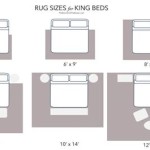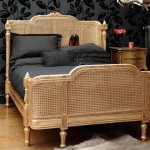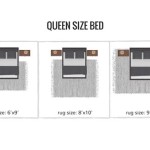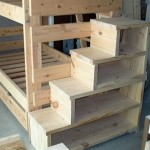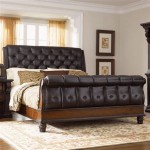How To Build a Toddler Bunk Bed
A toddler bunk bed is a space-saving and fun addition to any nursery or children's room. It provides a separate sleeping space for two children while also adding a playful element to the room. Building a toddler bunk bed can be a fulfilling DIY project, offering a sense of accomplishment and the satisfaction of creating something unique for your child. This guide will provide a comprehensive overview of the process, outlining key steps and considerations for constructing a safe and sturdy bunk bed.
Planning and Design
Before embarking on the construction process, it's essential to carefully plan and design the bunk bed. This involves determining the bed's dimensions, material choices, and overall aesthetic.
Dimensions: Consider the available space in the room and the age and size of the intended occupants. Toddler bunk beds typically have shorter lengths and lower heights compared to standard bunk beds.
Materials: Common materials for bunk beds include wood, metal, and composites. Wood provides a natural, sturdy, and customizable feel, while metal offers durability and ease of cleaning. Composites can be lightweight and cost-effective.
Aesthetic: Choose a design that complements the existing furniture and décor in the room. Toddler beds often feature whimsical themes, vibrant colors, and playful accents.
Construction Process
Once the design is finalized, the construction process can begin. This involves cutting, assembling, and finishing the bed frame.
Cutting: Using a saw, cut the wood or metal pieces to the desired lengths and angles. Precision is crucial for a stable and aesthetically pleasing bed frame.
Assembling: Following the chosen design plan, join the cut pieces using wood glue, screws, and other appropriate fasteners. Ensure a secure and robust connection for the bed's structural integrity.
Finishing: After assembly, apply a protective coating such as paint, stain, or sealant to enhance durability and aesthetics. Choose finishes that are safe for children, considering potential allergies or sensitivities.
Safety Considerations
Safety is paramount when building a toddler bunk bed. Incorporate safety features to minimize risks and ensure a secure sleeping environment for your child.
Guardrails: Install sturdy guardrails on both sides of the top bunk to prevent falls. Ensure the guardrails are securely attached and have a sufficient height to prevent children from rolling over them.
Ladder: Choose a sturdy and safe ladder for accessing the top bunk. Ensure the ladder is appropriately sized for the child's height and has non-slip steps to prevent accidental falls.
Mattress: Use a firm and supportive mattress that fits snugly within the bed frame to prevent sagging and ensure proper sleep posture.
Regular Inspections: Periodically inspect the assembled bed for any signs of wear or damage. Tighten loose screws and address any safety concerns immediately.

Toddler Bunk Beds Diy Crib Mattress Bed Build It Yourself

Free Woodworking Plans To Build A Toddler Sized Low Loft Bunk The Design Confidential

Toddler Bunk Bed Do It Yourself Diy Plans Fits A Crib Size

How To Make Kid S Bunk Beds Buildeazy

Pin On Pierce Raymond

Toddler Bunk Beds That Turn The Bedroom Into A Playground

7 Awesome Diy Kids Bed Plans Bunk Beds Loft The House Of Wood

Toddler Size Bunk Beds Space Saving With Kids The Minimalist Mom


Toddler Bunk Bed Plans Howtospecialist How To Build Step By Diy
